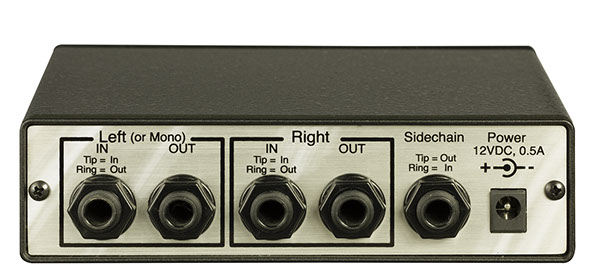

<<
>>
RNLA7239 — Really Nice Levelling Amplifier
— Main Features —
• Stereo compressor in 1/3 rack size.
• Accurate & repeatable 5-parameter
controls.
• Imparts an obvious, euphonic
"thickness" to the source.
• "Log Release" mode to restore
transients lost on some percussive
sources.
• Attack & Release controls are
calibrated in the famous and
coveted Tufnel scale.
• Single TRS-cable attachment to
many "insert" jacks.
• 1/4" TRS sidechain insert for special
effects.
• Rack-mountable.
• Rugged extruded aluminum and
electro-galvanized steel enclosure.
What It Is
Years ago, many RNC users pined for less invisible compression and requested that FMR Audio offer a more "colorful" compressor, suitable for bass guitar, drums and other sources in need of added sonic texture. In response, our designer went to the RNC archives and resurrected a version of RNC software that had been rejected for release because it wasn't invisible enough! The result: a compressor reminiscent of some classic opto compressors used to just "level" the signal rather than tame every transient. To celebrate the RNLA's sonic "color", a bright red knob* was chosen as a visual metaphor. Although the most recent version ships with a less ostentatious red-striped knob (not shown), the RNLA's sonic color remains bolder than ever...
How It Sounds
"Thick" and "gooey" is how some of our customer's have described the RNLA's sound. The RNLA is, admittedly, much "gentler" and not as apt to grab'n'run with the signal. Like an old-timey photocell, the RNLA is a little resistant to responding right away, but requires the signal to be there for a while to get the photocell to act. This action yields a soft musicality to the compressor's action that adds a desirable characteristic to the source signal.
How It's Done
The RNLA and the RNC share much of the same hardware, but run different algorithms to achieve the desired effect. The RNLA exercises the well-known dictum (among dynamic processor designers) that, after the static characteristics of the signal path, the main contributors to a processor's sound are the shapes of the attack & release envelopes. The RNLA's software then transforms the sidechain signal into a drive signal for the VCA that both slows things down a bit and totally reshapes the crisp and quick action of the RNC's "normal" mode. This reshaping (and slow down) are the primary sonic drivers behind the RNLA's "thick and gooey" sound!
©2025 FMR Audio